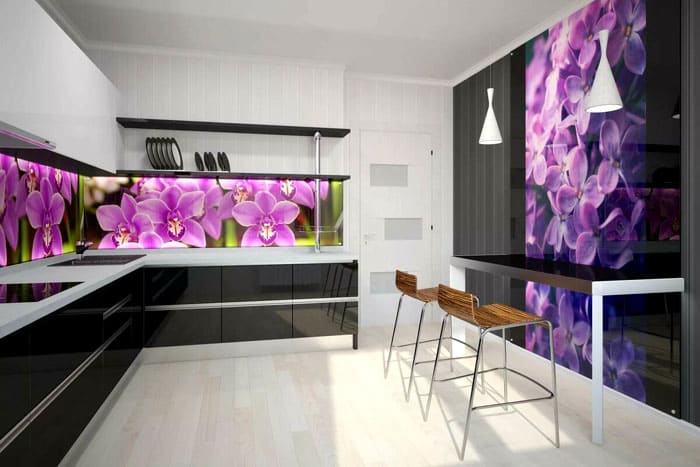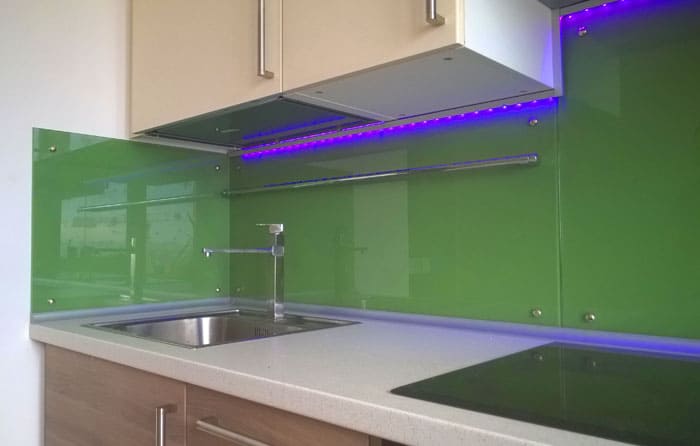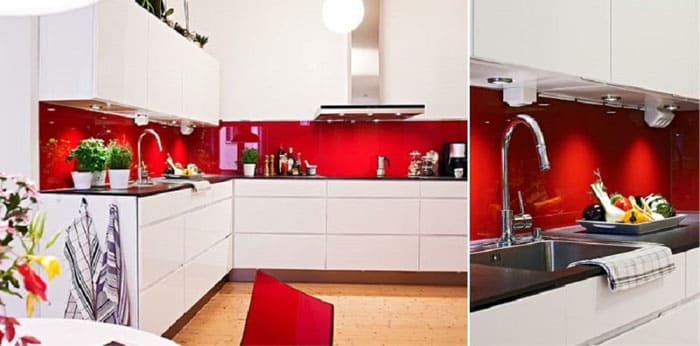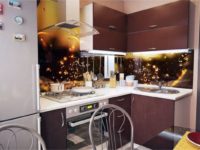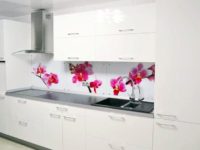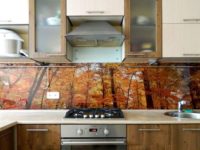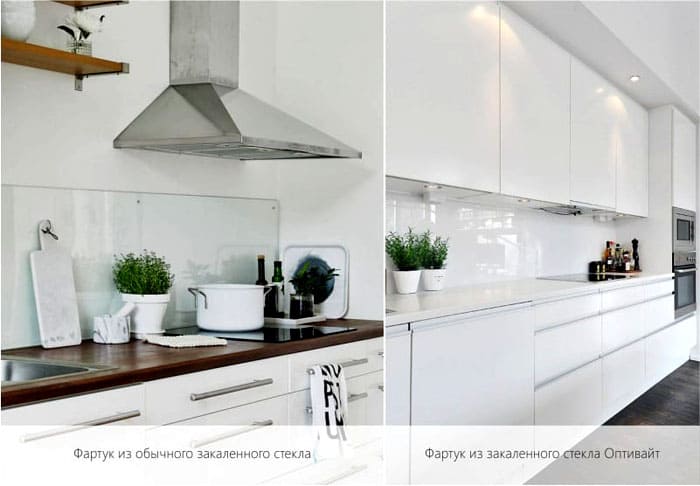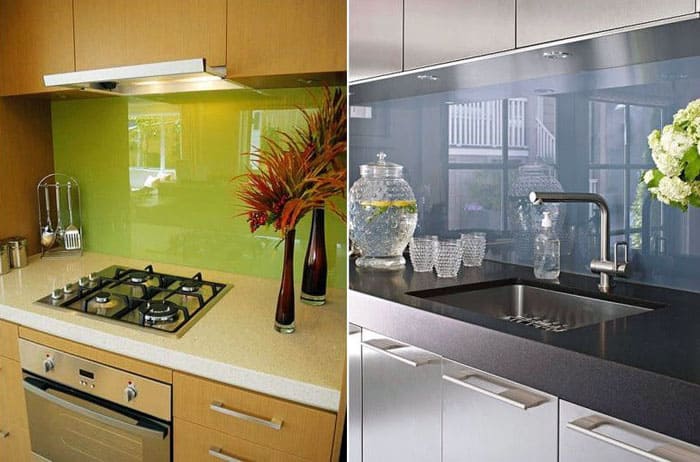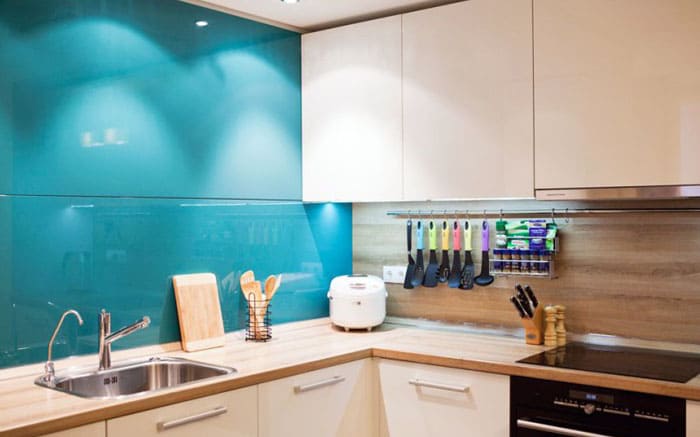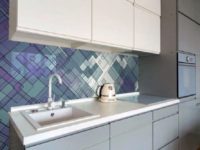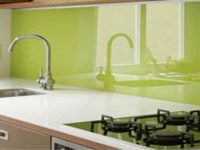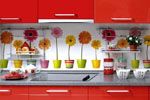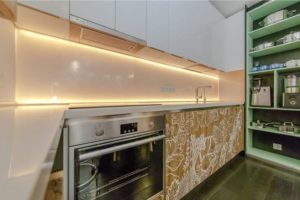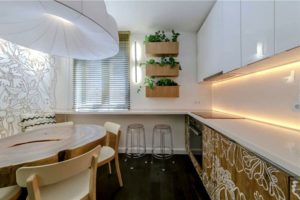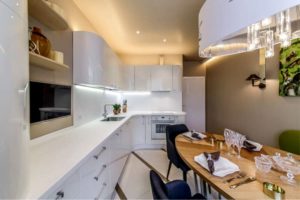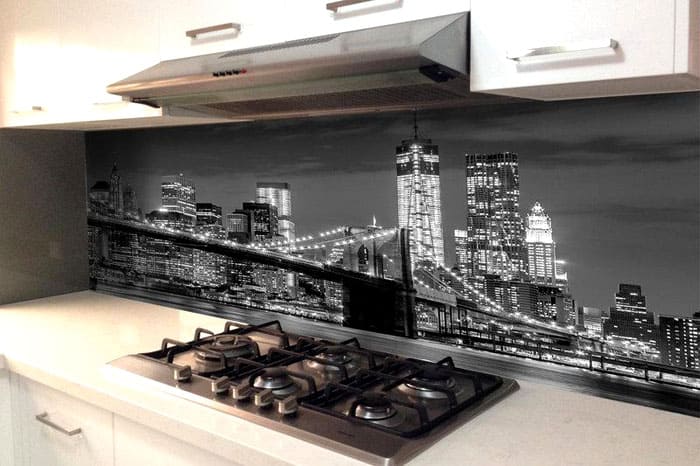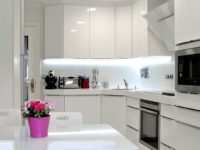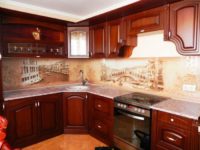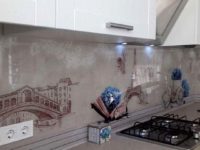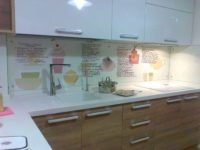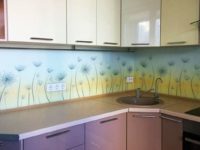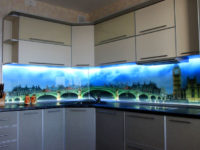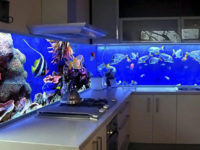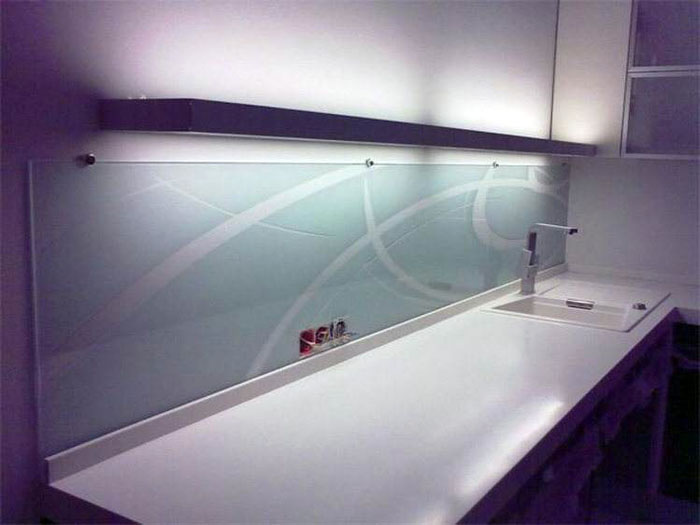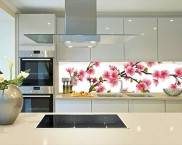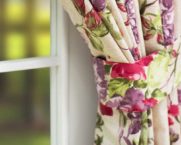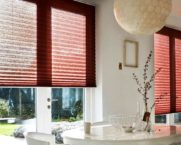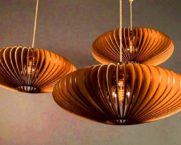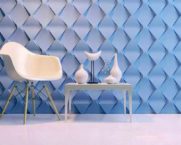Glass apron for the kitchen: performance characteristics, materials of manufacture, selection criteria
The importance of using an apron for the kitchen can hardly be overestimated. It performs not only a protective, but also a decorative role. Often, it is the stylistic element that connects kitchen fronts different colors into a single composition. At the same time, it is on the glass backsplash for the kitchen (as well as on the countertop) that the main pollution gets, fats settle, and high temperature and humidity affect. Therefore, his choice should be taken as responsibly as possible. The article touches upon a rather narrow segment of kitchen aprons, glass products.
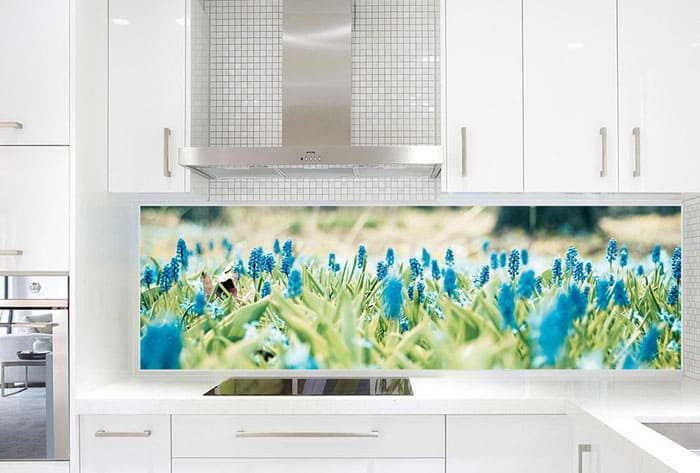
As it turned out, there are many materials from which skinals are made. Each of them has its own operational characteristics, its pros and cons.
The content of the article [Hide]
- 1 Advantages and disadvantages of using
- 2 Classification of a glass kitchen apron by materials and manufacturing features
- 3 Optimal size and location
- 4 Backlight
- 5 Criteria for choosing a tempered glass apron
- 6 Gallery - glass aprons for the kitchen, made in various styles
- 7 What is required for self-installation
- 8 Summing up
Advantages and disadvantages of using
First of all, you need to figure out why it is worth choosing a kitchen apron made of glass, and not from traditional tiles or other materials:
There are certain technical limitations for the kitchen apron:
Related article:
Classification of a glass kitchen apron by materials and manufacturing features
There are several externally similar materials from which glass aprons for the kitchen are made. They differ markedly in their performance and resistance to temperature extremes, humidity, as well as to the use of household chemicals and resistance to mechanical stress.
Stalinite - tempered glass
This is an ordinary silicate-based window glass that has been heat treated: heated and then sharply cooled. This material has high impact resistance, absolute resistance to high temperature and humidity, abrasion and scratch resistance, which is reflected in the ability to clean with abrasive agents. The material does not tarnish and does not lose transparency, even under the influence of aggressive chemical cleaners.
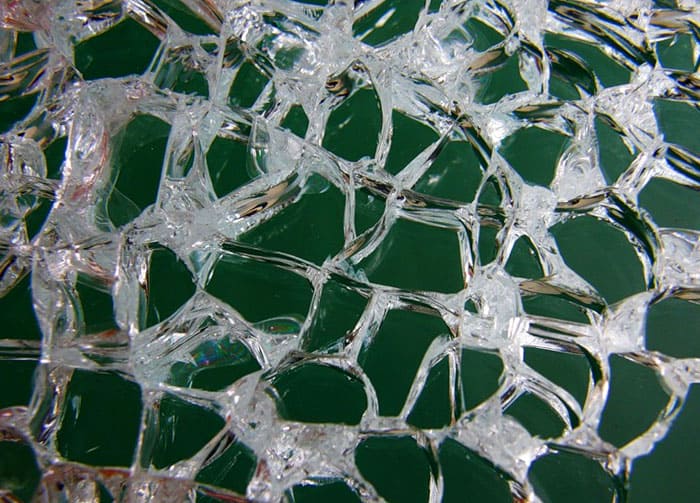
If such glass is broken, it will crumble into small cubic fragments with blunt edges, about which it is impossible to injure
Has a fairly high cost, but still cheaper quality tiles and porcelain stoneware. The dimensions of the glass, as well as the technological holes for the sockets, must be taken into account before manufacturing. Tempered glass has several types of manufacturing technologies, which are expressed in different visual effects.
Stemalite (enamel) - enameled glass. It is also called back painted. Before starting the hardening process, it is painted with special pigments, and after heat treatment the paint cannot be removed.
Satin is a coating, the front surface of which is processed either with a sandblaster or with special acids, creating a matte effect. Due to the need for processing, it is slightly more expensive than regular clear glass.
Frosted glass is usually made without staining or prints. The background of the base is used as a decoration.
Skinali is a transparent tempered glass panel, on the back of which a vinyl film with an image is fixed. There are two types of images:
Various skin options:
Optiwhite is a coating that contains special additives that rid the glass of its characteristic greenish-blue "bottle" tint.Costs one and a half times more expensive than ordinary unbleached. It is advisable to use such an apron in combination with a light backing.
Related article:
Triplex - laminated glass
Triplex consists of several layers of regular or tempered glass and a polymer film between them. Most often, the outer layer is made of tempered glass, and the inner layer is made of ordinary glass. The total thickness is usually about 8 mm. If the film is transparent in car glass, then in kitchen aprons it plays the role of a decorative element. The film is painted or a drawing is made on it.
Among the advantages of a triplex:
The main disadvantage of a triplex kitchen apron is its high cost: depending on the configuration (both tempered glasses, the outer glass is additionally bleached, etc.), its price is 2.5-5 times higher than that of standard tempered glass aprons.
Video describing the decorative varieties of triplex

Plexiglass
The names are also possible: acrylic glass, plexiglass, carboglass, limacryl, PMMA, acrylite. One of the varieties of transparent polymer. Has the following advantages:
Among the shortcomings, it should be noted:
Colored plexiglass aprons:
Polycarbonate
It is similar to plexiglass in its appearance, but has higher performance characteristics. Lightweight, flexible, easy to process, you can install it yourself. Unlike plexiglass, it tolerates high temperatures better. It is much cheaper than a hardened coating, but it is very sensitive to mechanical damage.
Kitchen aprons made of polycarbonate. Given the affordable cost, a large area can be trimmed with such material.
Related article:
Optimal size and location
The size and location of the kitchen backsplash depends on the following factors:
The distance between the wall cabinets and the floor of the kitchen unit, in accordance with the standards and natural ergonomics, is 45-90 cm. Thus, the width of the apron will be within the same range, taking into account 2-5 cm for overlap.
Backlight
The use of transparent materials as a kitchen backsplash provides ample opportunities for using various options for illuminating the work surface.Special glass panels are produced (usually a triplex with a significant thickness) with built-in backlighting from LED strips. Such lighting is mounted in a rigid box at the top or bottom of the apron.
Built-in LED backlight option:
You can also make LED lighting yourself by gluing the LED strip to the bottom of the hanging cabinets of the kitchen set, right next to the apron. There won't be much difference in efficiency, and the efficiency of lighting the working area will increase significantly. The only condition is to use led strip with external silicone protection to prevent contamination and damage.
Installing the LED strip near the apron:
Criteria for choosing a tempered glass apron
There are no special tips for choosing budgetary options for a plastic apron, since it can be upgraded or replaced at any time without spending a lot of money. Another situation is with triplex or single-layer tempered glass. They are quite expensive, so when choosing them, you need to focus on the following parameters:
For example, in a kitchen made in the style of Urban, a print depicting a city at night will look good.
Gallery - glass aprons for the kitchen, made in various styles
Consider the design options for kitchen aprons in different styles.
High tech:
Classic:
Modern:
Original lighting solutions:
What is required for self-installation
There are several ways to install a kitchen backsplash. The cladding made of polymer materials lends itself well to processing, so it can be drilled. It is advisable to mount such a structure using screws with decorative plugs. As a rule, such an apron is mounted at some distance from the wall (2-4 mm), so the quality of the base does not play a significant role. If desired, such a cladding can be quickly replaced with a new one. Decorative plugs masking screws not only do not spoil the look, but can also become decorative elements.
Hinged fasteners. In this case, the fastening materials will be minimally noticeable, these are small steel plates that are screwed to the wall. It is most advisable to use them if the apron is assembled from several small elements.
Aprons made of triplex or tempered glass, as a rule, are installed on liquid nails or other type of adhesive mixtures. To do this, you need to prepare the surface of the base - carefully level it. This method of fastening is best entrusted to professionals, since after installation, it will be extremely difficult to fix anything.
Summing up
Undoubtedly, a glass backsplash is a more profitable and easy-to-use alternative to cladding from tiles, wood panels or natural stone. Considering that more and more companies are engaged in the manufacture and installation of such products, in the future it will enjoy continued popularity.



